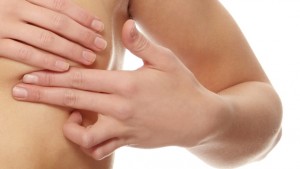A few years back lack of sexual arousal was not discussed that much. But since Viagra has been such a success in males, the search was on for a similar drug for females who have a lack of sexual arousal. The new drug, the “Viagra equivalent for women” is flibanserin under the trade name Addyi.
The news about this new drug has been noted in the media.
How flibanserin works
How does flibanserin work? It stimulates 5-HT1A receptors in the frontal brain to produce more serotonin and dopamine. Due to these substances a premenopausal woman with a lack of desire for sex becomes more arousable. It may sound reasonable at first, but when you look at the many other effects that a stimulation of 5-HT1A receptors can produce, I find it surprising that the FDA gave approval to this drug.
Flibanserin can cause opening up of skin veins leading to hypothermia and fainting due to a lowering of blood pressure. It has some pain relieving properties. Flibanserin can also interfere with learning and inhibit some aspects of memory. Some positives are decrease in aggression, increase in sociability and decreased impulsivity.
Here are a few points that need to be discussed regarding this new drug.
Treating a symptom rather than the cause
Premenopausal women have a lack of progesterone, as their ovaries do not ovulate as regularly as they did in the past. When the last ovulation has occurred, the woman’s periods stop for good. She is said to have entered menopause. There is a profound lowering of estrogen and progesterone levels, which also leads to a lowering of the testosterone blood level. In women the percentage of testosterone is minute compared to men, but testosterone is essential for normal libido. About 5 years before a woman gets into menopause testosterone levels and progesterone levels may already be getting reduced. It is this low testosterone level, which is the cause of the lack of sexual arousal. So, why are we suddenly treating these symptoms with a poorly understood drug? The causes for a lack of sexual arousal are premenopausal hormone changes: mostly lowered progesterone and some lowered testosterone.
Alternative treatment of lack of sexual arousal
Dr. Lee has written several books that became famous. He treated hormone deficiencies in people with replacement of bioidentical hormones. This resulted in feeling new energy and losing the symptoms for which the patients sought consultation. With regard to premenopausal symptoms Dr. Lee wrote the following in one of his books.
It is interesting that these premenopausal women all got help with progesterone cream. Their sexual arousal returned as well as a tiny amount of bioidentical progesterone metabolizes into testosterone, which increases libido in women.
It is clear that Dr. Lee would have done what any anti-aging physician today would do: measure hormone levels and add back the hormones that are missing. In the case of premenopausal women it is mostly progesterone that is missing.
What is better: using a chemical or using a natural hormone?
We need to come to terms with the question: is a chemical like Viagra better for a male to get an erection or natural testosterone?
Viagra and others of that type are drugs that are a foreign substance to the body. There are a significant number of side effects with this medication such as headaches and clotting problems that limit the use for certain patients. Bioidentical testosterone replacement therapy, which can stimulate libido significantly, can often eliminate the need for Viagra type drugs. In the past, with the use of synthetic testosterone, hepatic toxicity and with long-term use the risk of liver cancer existed. Dr. Morgentaler has shown that prostate cancer is not a risk with long-term use of bioidentical testosterone. Also, with synthetic testosterone blood could turn too viscous (secondary polycythemia), which could cause a stroke. The physician has to monitor patients on synthetic testosterone for these side effects accordingly, but this is not necessary with patients on bioidentical testosterone.
If a physician treats a male with erectile dysfunction, he orders a blood test for testosterone. If this comes back with a low testosterone blood level the physician knows what the cause is of the erectile dysfunction. The low testosterone is the cause of erectile dysfunction and therefore treatment consists of bioidentical testosterone replacement therapy. The treatment does NOT consist of a drug like Viagra. Males tolerate testosterone well with no side effects. Instead the man experiences a profound feeling of wellbeing.
The same reasoning is true for a premenopausal woman with a lack of sexual arousal. If she is deficient in progesterone hormone, she needs bioidentical progesterone cream, not a new drug called flibanserin with a myriad of side effects.
Evidence of efficiency of flibanserin in treating sexual arousal
Evidence based medicine scrutinizes research papers to calculate the numbers of patients to be treated before there is one positive therapeutic effect. Researches have defined that a good medical treatment is one where only 50 or less patients get a treatment before one therapeutic success occurs.
The observation from the studies on flibanserin was that satisfying sexual events rose from 2.8 to 4.5 times a month. However, women receiving placebo reported also an increase of satisfying sexual events from 2.7 to 3.7 times a month. In comparison to the placebo there was only a difference of 0.8 times per month that women experienced a satisfying sexual event! If the average American couple has sex 2 to 3 times per week (2.5 times per week), this translates to 10 times per month. We just heard that 0.8 times of these 10 times per months a satisfying sexual event occurred on flibanserin. Flibanserin is taken as one tablet at bedtime.
Compared to the placebo group, it would take 12.5 episodes of sex to generate one event of success (satisfying sexual event), which can be attributed to taking flibanserin daily. The NNT (number needed to treat) is 12.5. However, if you count the number of days of taking tablets, it would take 37.5 days of taking flibanserin to create one satisfying sexual event, so the NNT=37.5. Nevertheless, both numbers would still be acceptable as a moderately effective medicine, as they are below 50.
But I think that we have to be much more cautious in this case as the side effects are considerable and an alternative with no side effects and much more effect exists (bioidentical progesterone replacement).
Consumer education needed
Should the patient trust a physician’s prescription? Then there is the question: should the patient put up with side effects like nausea, tiredness, and difficulty falling asleep or staying asleep, a dry mouth, constipation or excessive sleepiness? Finally, should the patient insist to be educated about bioidentical hormone replacement therapy?
From an evidence-based medicine view bioidentical hormone replacement is the drug of choice. With a number needed to treat (NNT) of 2 to 5 bioidentical hormones have a much higher efficiency than flibanserin. In other words, many women would experience a satisfying sexual event a lot more often. They would experience sexual arousal after having had sex 2 to 5 times instead of 12.5 times.
Bioidentical hormone replacement much safer and more effective
Replacing missing hormones and restoring her hormones to how they were when she was younger should help. The physician ought to explain to the premenopausal woman that bioidentical progesterone replacement is a much safer treatment option. There are no side-effects with bioidentical progesterone. This ovarian hormone has been part of the woman’s menstrual cycle all along. It is also important for the woman to educate herself about bioidentical hormone replacement and ask questions. Some physicians are of the old conservative school and may refuse this type of approach. In this case it is time to seek out a naturopathic physician.
Conclusion
Nobody would suggest to treat depression associated with hypothyroidism with antidepressants. Instead the physician treats hypothyroidism with thyroid hormones and the depression disappears.
Similarly, premenopausal syndrome presents with a lack of arousal, a symptom due to progesterone deficiency. This needs treatment with bioidentical progesterone cream. Why would you treat only symptomatically with flibanserin and risk all of the side effects mentioned. It makes more sense to treat the cause (low progesterone) rather than the symptoms. See a naturopath or a physician who understands natural hormone therapy to get the best results.







